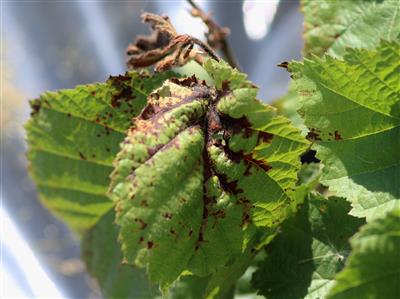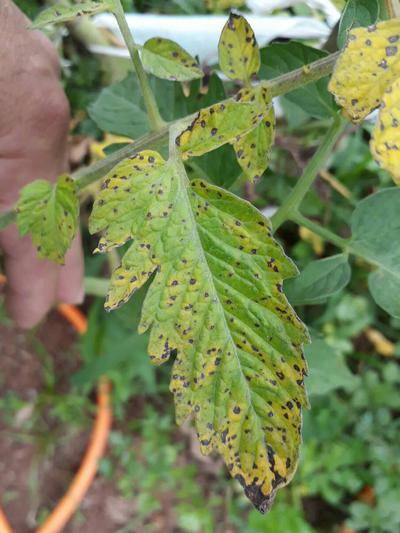
Bacteriosis
WHAT IT IS AND HOW TO ELIMINATE
Plantas decorativas de jardín y/o interior
Bacteriosis
Xanthomonas Sp., Pseudomonas Sp.
Pathogen:
Bacterium
Type:
Risk to the plant:
HIGH
Bacteriosis

WHO CAUSES IT?
The pathogens Xanthomonas sp. and Pseudomonas sp. are bacteria that cause diseases known as bacteriosis in a wide variety of plants. These bacteria are found in soil, water and on the surface of plants. They begin their infectious cycle by entering the plant through wounds, stomata or hydathodes. Once inside, they multiply in the intercellular space and produce enzymes that break down cell walls, causing necrosis and other damage to plant tissues. These bacteria can survive on plant debris, contaminated seeds and in soil, facilitating reinfection in the following growing season. Dispersion occurs through irrigation water, rain splash, wind, insects and contaminated tools. In addition, certain species can form biofilms that protect them from adverse conditions and phytosanitary treatments.
SYMPTOMS
The disease caused by Xanthomonas sp. and Pseudomonas sp. in plants it manifests with symptoms that significantly affect the health and productivity of the plants. These bacteria cause leaf Taches, cankers on stems and fruits, and root rot. The initial infection usually begins as small watery Taches that expand and necrotize, developing into dark brown or black Taches with yellow halos. In severe infections, they can lead to defoliation, reduced growth and, in extreme cases, plant death.
- Watery Taches on leaves that expand and necrotize.
- Yellow halos around the Taches.
- Cankers on stems and fruits.
- Root rot.
- Premature defoliation.
- Reduction of plant growth.
- Wilting and collapse of the plant.
- Death of the plant in severe infections.


DEVELOPMENT CONDITIONS
Temperature:
20°C - 30°C
Humidity:
70% - 90%
HOW IS IT SPREAD?
Irrigation water, rain splashes, wind, insects, contaminated tools, direct contact between plants, contaminated seeds, infected plant remains, soil
HOW TO ELIMINATE IT?
Home treatments
Natural allies
There are no natural allies
Chemical treatments
RECOMMENDED PRODUCTS TO ELIMINATE THE PEST
PLANTAS REPELENTES
-
RECOMMENDATIONS
- Avoid wetting the leaves when watering, do it directly to the ground.
- Removes diseased parts and plant remains from the soil.
- Always use clean and disinfected tools.
- Do not handle plants when they are wet.
- Improves ventilation between plants to reduce humidity.
- You can use copper-based treatments as a preventative.















